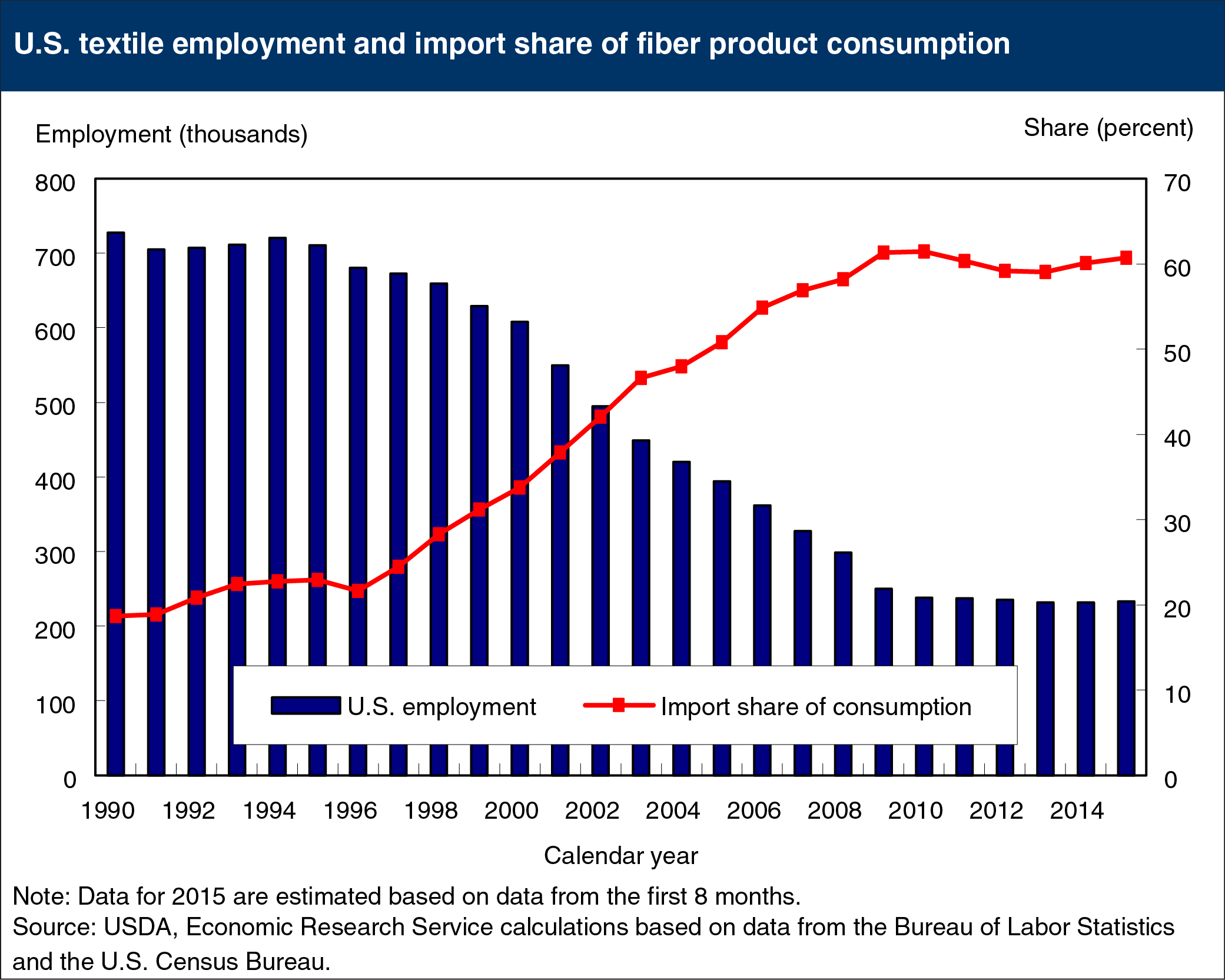Output and employment in the U.S. textile industry has stabilized
- by Stephen MacDonald
- 11/2/2015

Employment at U.S. textile plants has fallen by nearly two-thirds over the past 20 years as fabric production and apparel manufacturing shifted overseas in search of lower labor and production costs. Today, more than 60 percent of clothing and other textile products purchased by U.S. consumers is produced outside of the United States. However, both the sharp decline in U.S. textile employment and the rise in import share of U.S. fiber consumption began to level off around 2009. In recent years, the U.S. textile industry—particularly the capital-intensive yarn and fabric production industry—has shown signs of a modest rebound. Cotton consumption by U.S. textile mills in marketing year 2015 (August/July) is forecast at 3.7 million bales, up 3.5 percent from a year ago and 12.1 percent from its 2011 low. In 2014, U.S. textile mill employment showed its first gain since 1994—up 0.2 percent. Investment in U.S. cotton spinning by firms from China and India is underway as well, reflecting the changes in global textile markets since the Multi-Fibre Arrangement (which governed world trade in textiles and garments) expired on January 1, 2005. This chart is from the October Cotton and Wool Outlook report.


